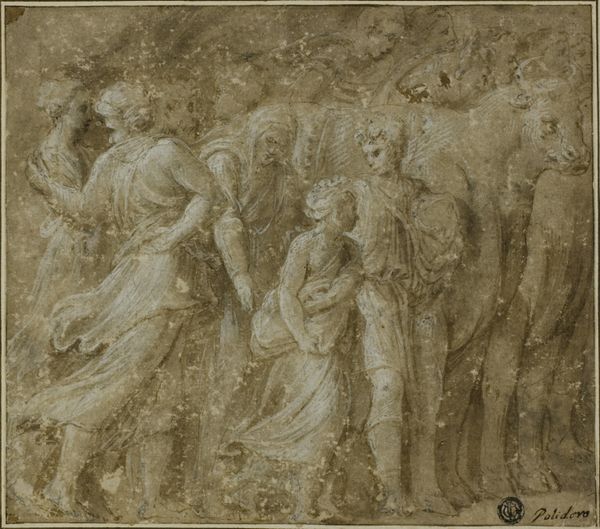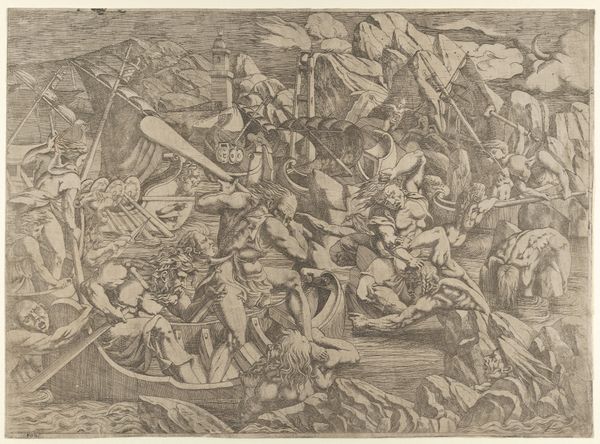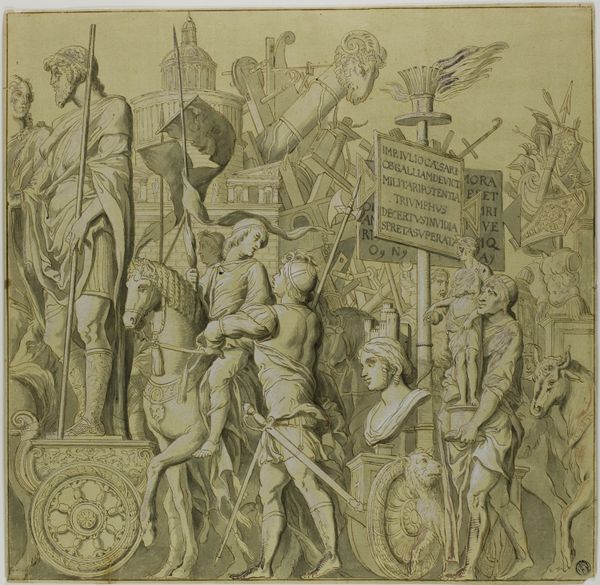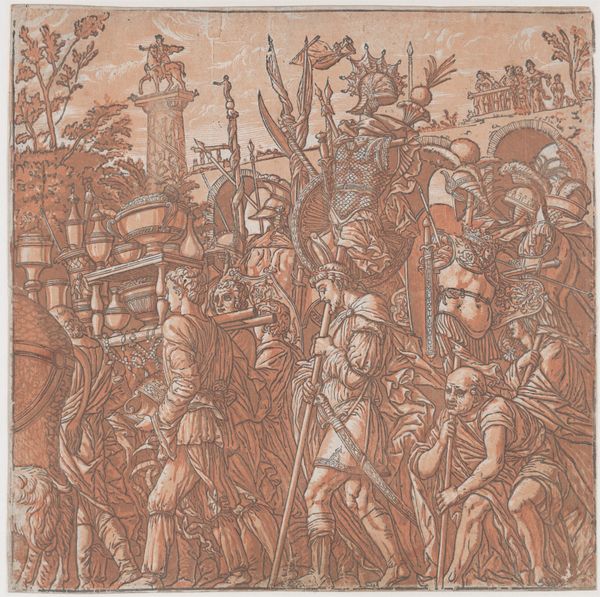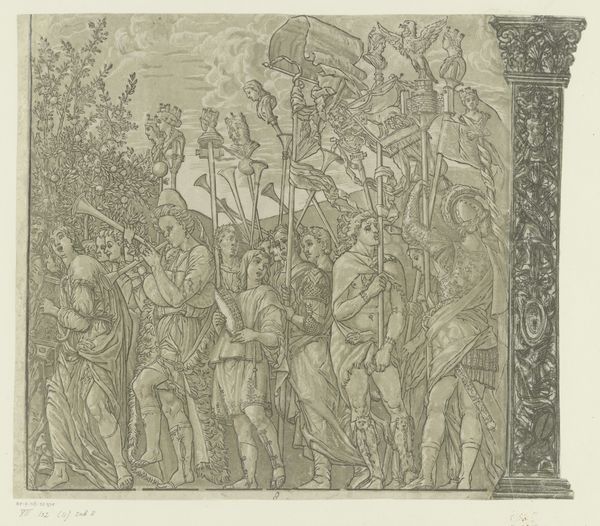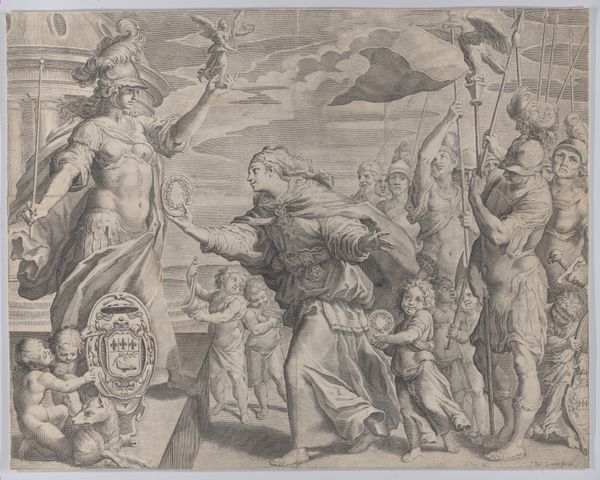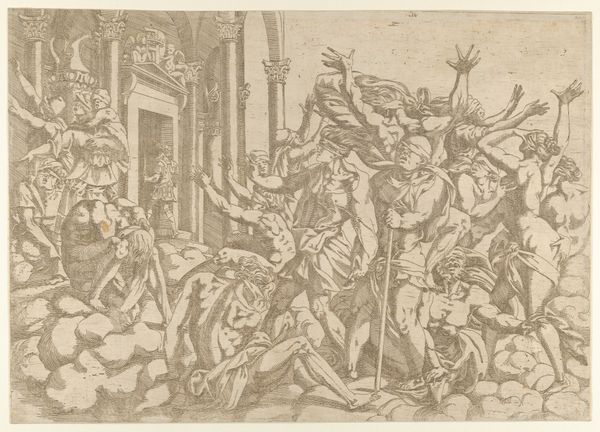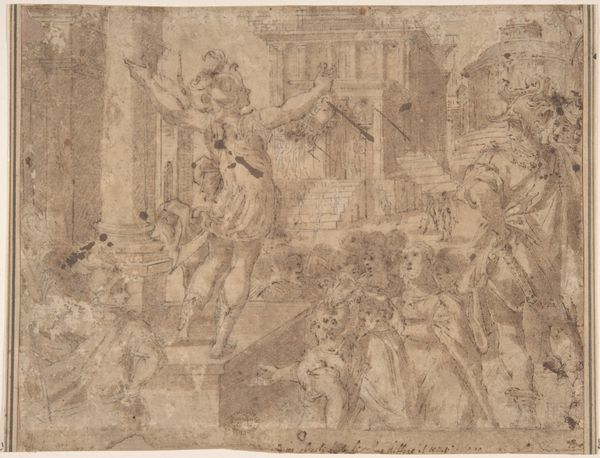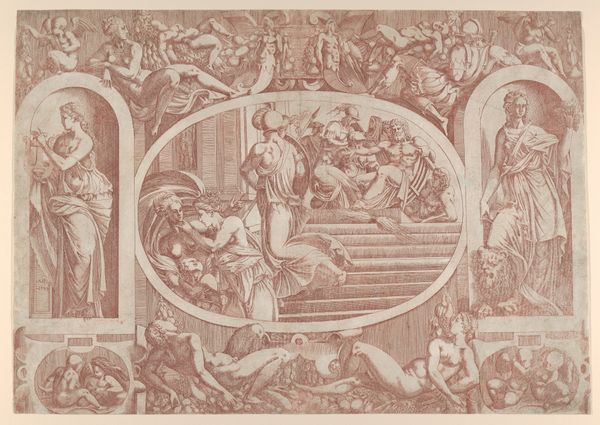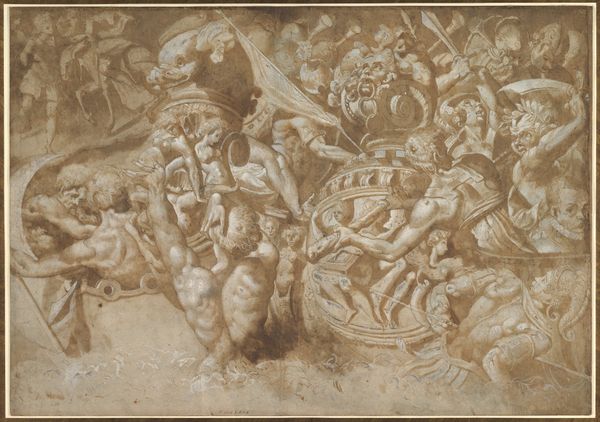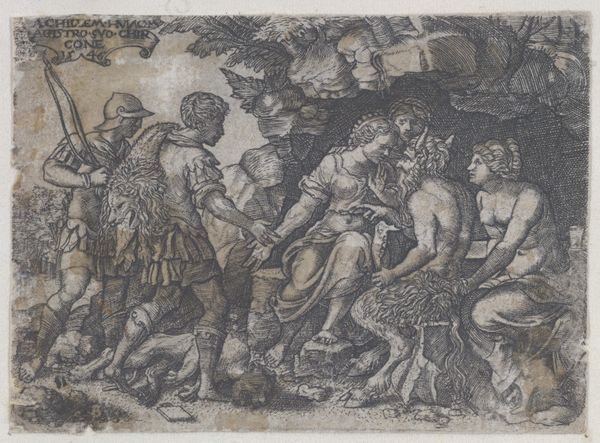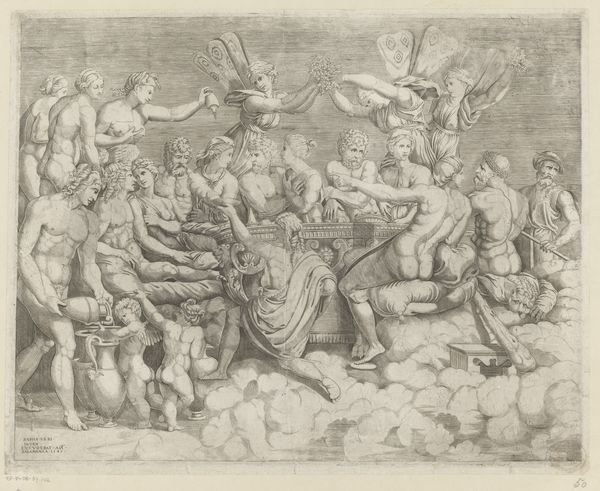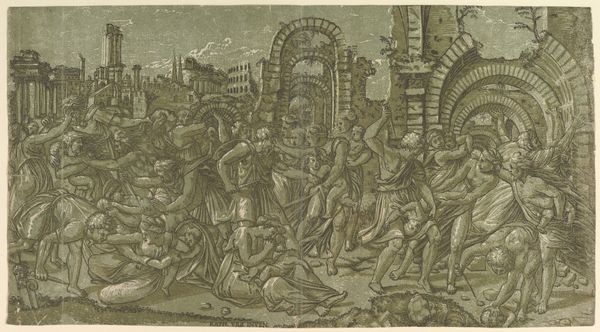
drawing, charcoal
#
drawing
#
charcoal drawing
#
charcoal
#
history-painting
#
academic-art
#
charcoal
Dimensions: 287 mm (height) x 430 mm (width) (bladmaal)
Editor: We're looking at "Scene from Roman history," a charcoal drawing made sometime between 1600 and 1700 by an anonymous artist. It’s filled with figures in armor, a real frenzy of action. I’m struck by the overwhelming sense of conflict, of course, but it also seems like it may speak to social order. What do you see in this piece? Curator: The drawing definitely presents a vision of power, doesn't it? But I encourage you to think about how representations of Roman history often served very specific ideological functions. This wasn't just about depicting the past; it was about shaping present-day political narratives, especially during periods of nation-building or imperial expansion. How might we understand this image in relation to the power dynamics of the artist’s own time? Who benefits from this view of the past, and whose stories are erased or suppressed? Editor: So you’re saying it’s not just a history lesson, but more like a political statement dressed up as history? It makes me wonder about the anonymous artist’s own position in relation to those power structures. Curator: Precisely! And look closer at how violence is being portrayed. The fallen figure being subjugated speaks volumes about domination. But also note that the history genre usually highlighted figures with money and power. To understand it properly we need to think critically about the visual rhetoric being employed. Do you see anything that challenges your initial sense of conflict or of established social order? Perhaps something subversive? Editor: Hmmm…not overtly. But thinking about your idea of suppressed narratives, I wonder what a Roman woman would make of this scene? Curator: Exactly. Shifting our focus to include those often marginalized voices enriches our reading immensely. Thank you for taking us there! Editor: Thank you! Now I’m keen to dig deeper into how historical narratives in art intersect with gender and class.
Comments
No comments
Be the first to comment and join the conversation on the ultimate creative platform.
